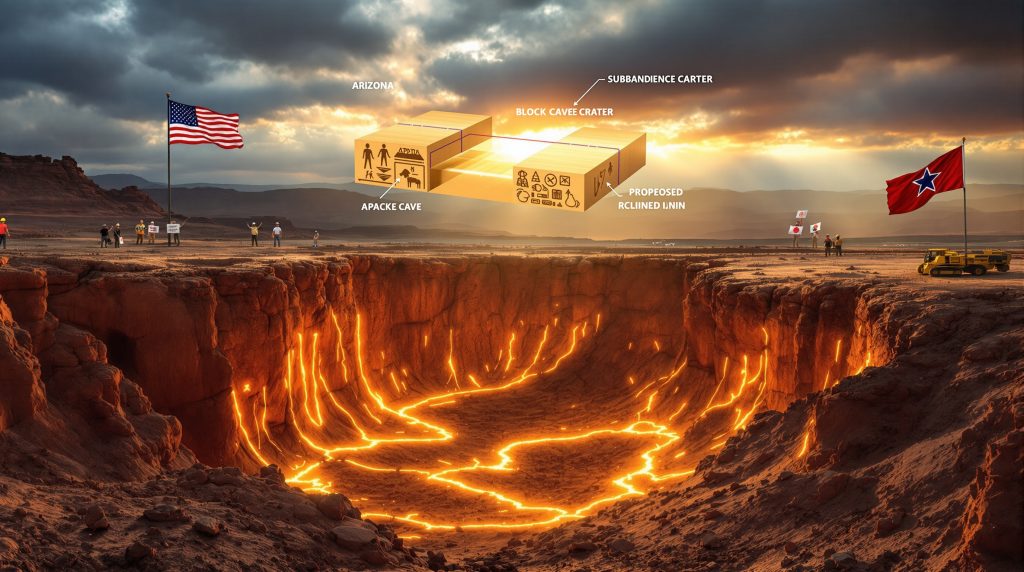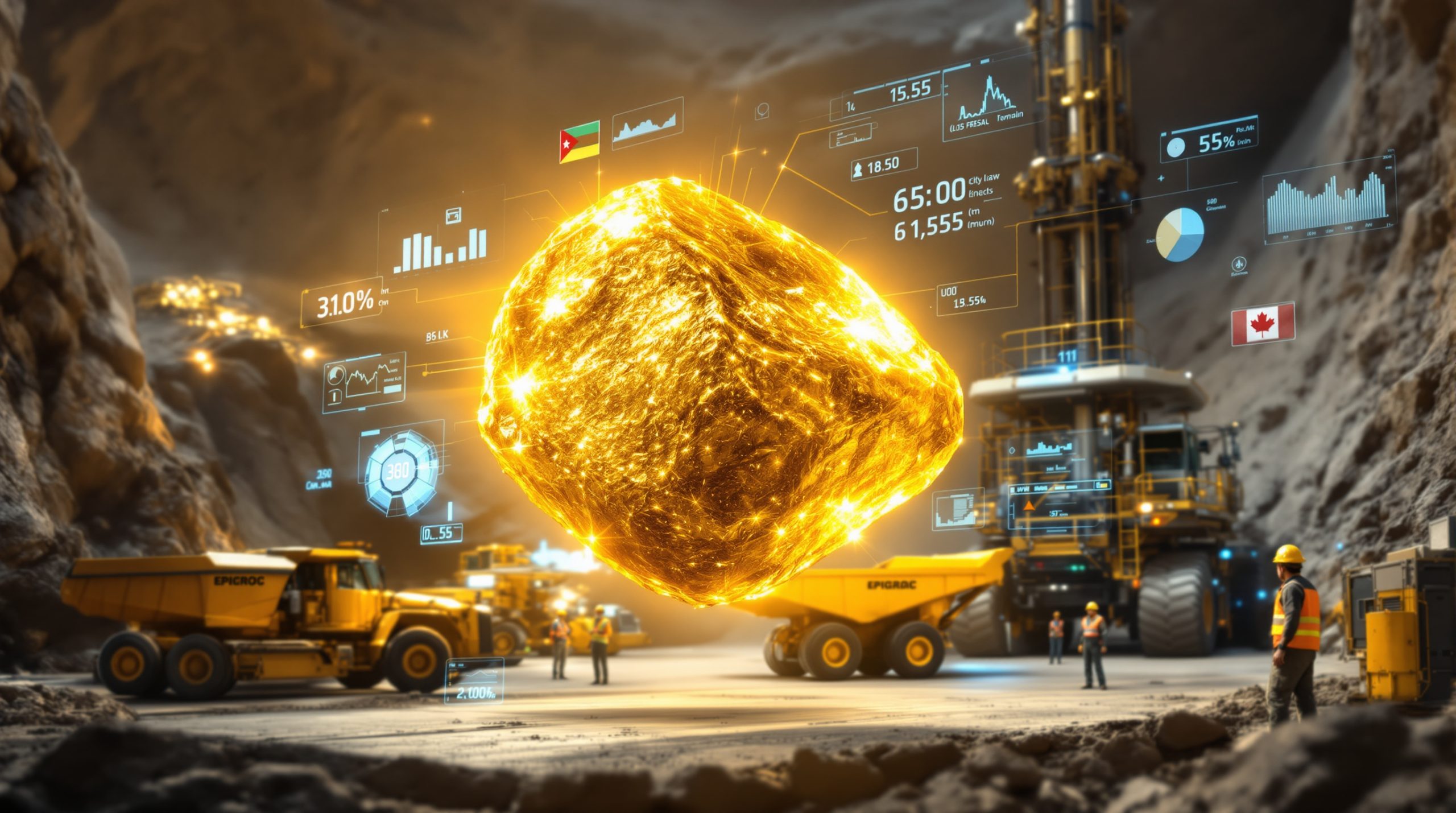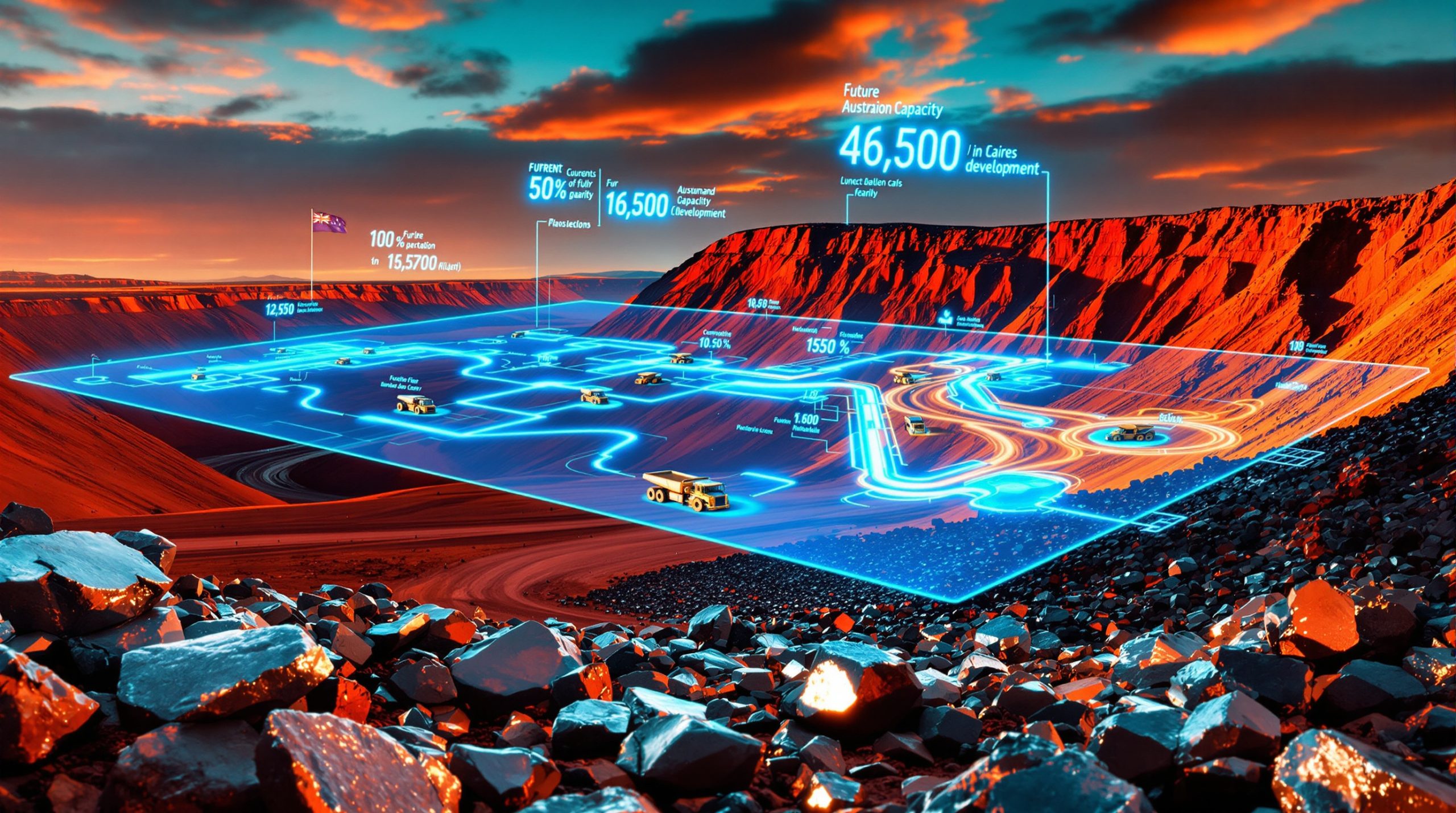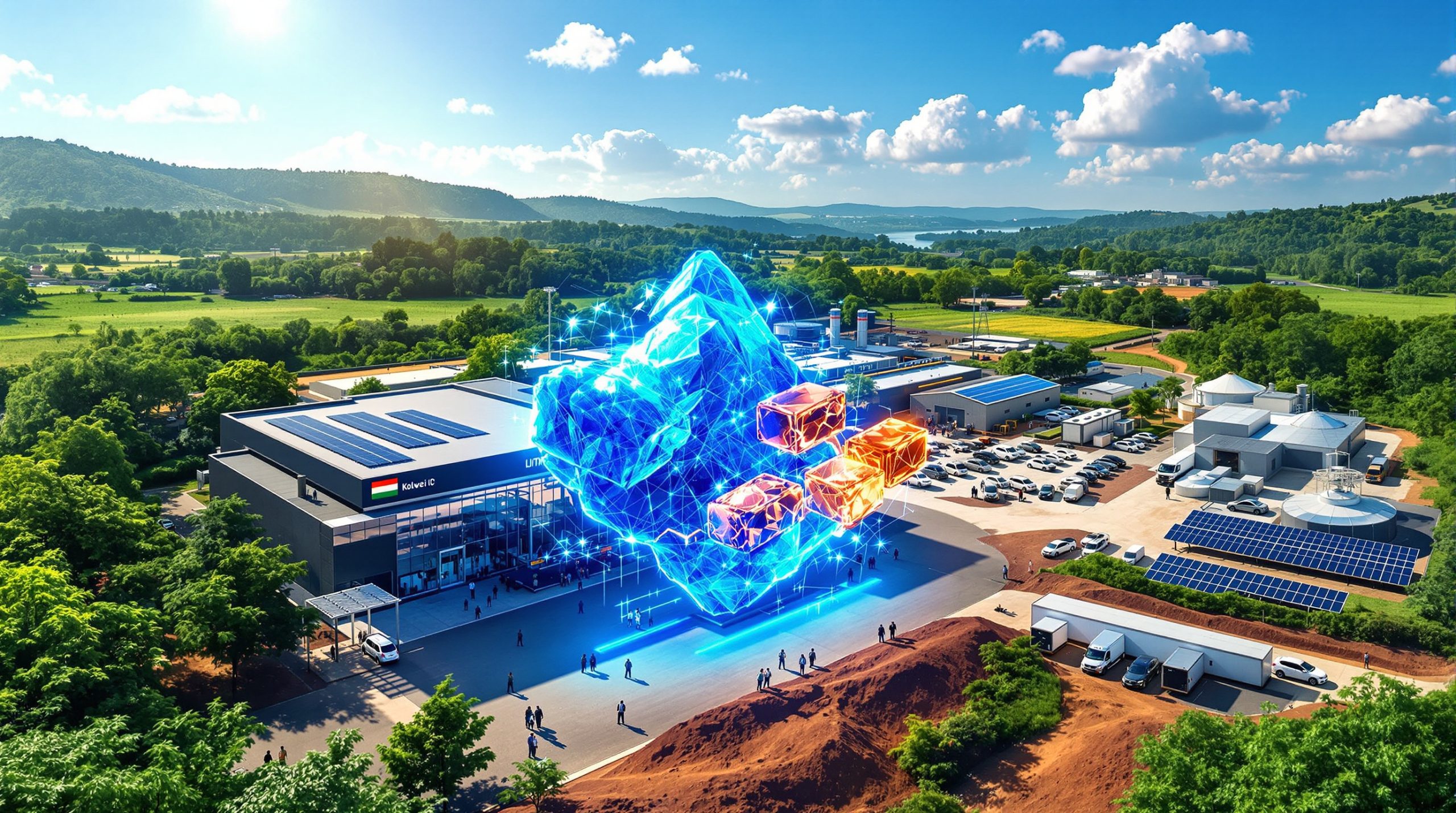The Resolution Copper Mine Controversy: Balancing Economic Potential with Cultural Heritage
The Resolution Copper project stands at the intersection of economic opportunity and cultural preservation, creating one of the most significant mining controversies in recent American history. This proposed copper mine in Arizona has become a lightning rod for debates about indigenous rights, environmental protection, and domestic mineral security. As stakeholders navigate competing priorities, the project's future remains uncertain amid ongoing legal challenges and passionate advocacy from various groups.
What is the Resolution Copper Project?
Overview of the Proposed Mine
The Resolution Copper project represents one of America's largest untapped copper resources, located at Oak Flat in Arizona. This massive mining venture is structured as a joint venture between Rio Tinto, which holds a 55% ownership stake, and BHP, which maintains the remaining 45% ownership. According to industry reports, the project is projected to produce approximately 20 million tonnes of copper over a 40-year operational lifespan.
Development plans have been in motion for more than a decade, with substantial investments already made in exploration, environmental studies, and community engagement. The project would employ block cave mining techniques, a method that allows for extraction of ore bodies at greater depths than traditional open-pit mining.
BHP CEO Mike Henry has described Resolution as "one of the largest untapped, high-grade copper resources in the U.S., with the potential for thousands of high-value local jobs and billions in economic activity," highlighting the economic significance of the project to both the companies and the region.
Strategic Importance in the Global Copper Market
Resolution Copper is positioned as a critical domestic source of copper amid growing global demand for this essential mineral. The United States currently imports approximately 35% of its copper needs, making the development of major domestic sources a matter of economic and strategic importance.
The copper from this project would support numerous industries critical to American manufacturing, including:
- Electric vehicle production
- Renewable energy infrastructure
- Electronics manufacturing
- Construction
- National defense applications
Rio Tinto has emphasized its "150-year history in the US" as "a significant producer of copper, as well as lithium, tellurium, gold, silver, molybdenum, borates, and recycled aluminium," underscoring the company's role in domestic mineral production.
With copper price predictions showing significant increases in coming decades due to electrification and renewable energy transitions, the Resolution project's potential to significantly strengthen U.S. copper production capabilities becomes increasingly relevant in discussions about mineral security and supply chain resilience.
Why is the Resolution Mine Facing Opposition?
Sacred Land Controversy
At the heart of opposition to the Resolution Copper project is the sacred nature of Oak Flat (Chi'chil Biłdagoteel) to the San Carlos Apache and other Native American tribes. This site holds profound cultural and religious significance for indigenous communities who have utilized the area for ceremonial purposes for countless generations.
Tribal representatives have consistently maintained that the mine would permanently destroy irreplaceable cultural heritage sites, including:
- Ancient burial grounds
- Traditional ceremony locations
- Sacred springs and water sources
- Historically significant gathering places
- Areas central to oral traditions and tribal identity
Opposition centered on protection of ancestral lands and religious practices has united multiple tribes in their resistance to the project. Many tribal members view the potential destruction of Oak Flat as not merely an environmental issue, but an existential threat to their cultural continuity and religious freedom.
Environmental Concerns
Beyond cultural preservation, environmental groups have joined indigenous opposition citing potential ecological impacts that could extend far beyond the mine's operational footprint. Chief among these concerns is groundwater contamination and depletion in an already water-stressed region.
Environmental advocates point to several specific risks:
- The creation of a substantial subsidence crater that could be up to 1,000 feet deep and nearly 2 miles wide
- Potential contamination of groundwater with heavy metals and processing chemicals
- Disruption of wildlife corridors and habitat fragmentation
- Permanent alterations to the landscape and ecosystem
- Air quality impacts from mining operations and increased traffic
Questions about long-term mine reclamation innovations have further fueled opposition, with critics arguing that the projected economic benefits don't outweigh the permanent environmental costs that would persist long after the mine's operational lifespan concludes.
What Legal Challenges is the Project Facing?
Recent Court Decision Impact
A significant setback for the Resolution Copper project came with a recent U.S. court ruling that delayed a crucial land exchange necessary for project advancement. This land swap would transfer 2,422 acres of federally protected land to the mining companies in exchange for other parcels.
The court decision represents a significant impediment to the project timeline, as without the land exchange, the project cannot proceed as designed. While mining advocates view this as a temporary obstacle, opponents have celebrated it as a victory in their fight to permanently protect Oak Flat.
A Resolution spokesman characterized the ruling as "merely a temporary pause," adding that "We are confident the court will ultimately affirm the district court's well-reasoned orders." This statement reflects the company's determination to pursue legal remedies and continue advancing the project despite current obstacles.
Legislative and Regulatory Hurdles
Beyond the immediate court challenge, the copper controversy in resolution mine faces a complex web of legislative and regulatory requirements. The project requires approval from multiple federal agencies, including the U.S. Forest Service, Bureau of Land Management, Army Corps of Engineers, and Environmental Protection Agency.
The environmental impact assessment process has faced repeated challenges, with critics arguing that:
- Tribal consultation was inadequate and failed to properly consider cultural impacts
- Water usage projections were underestimated
- Wildlife protection measures were insufficient
- Long-term environmental monitoring plans lacked specificity
- Reclamation plans did not adequately address permanent landscape changes
Land exchange legislation has been contested through various legal channels, and ongoing litigation from tribal and environmental groups creates significant uncertainty for the project's timeline and ultimate viability.
How Are Key Stakeholders Responding to the Controversy?
Mining Companies' Position
Rio Tinto and BHP have maintained a steadfast commitment to advancing the Resolution Copper project, emphasizing its economic and strategic benefits while pledging to operate responsibly. In a significant demonstration of the project's importance, executives from both companies, including Rio CEO Simon Trott, outgoing boss Jakob Stausholm, and BHP's Mike Henry, met with President Trump to discuss obstacles facing the project.
The companies have consistently emphasized several key points in their public messaging:
- The project's potential to create thousands of high-value jobs and billions in economic activity
- Their commitment to environmental protection and responsible mining practices
- The strategic importance of domestic copper production
- Their ongoing engagement with local communities and stakeholders
Rio Tinto specifically highlights its extensive history in the United States and its role in producing various minerals essential to the American economy, positioning the Resolution project as a continuation of this contribution to domestic resource development.
Political Dimensions
The Resolution Copper controversy has become entangled in broader political debates about resource development versus conservation, illustrating how mining projects can become proxies for larger ideological battles. Former President Trump characterized opposition to the mine as "Anti-American" and driven by foreign interests, claiming opponents were working in the interests of foreign copper competitors.
In a post on Truth Social, Trump framed the project as a matter of economic security and accused "Radical Left" courts of impeding progress. This high-level political engagement demonstrates the project's national significance and how it has become emblematic of larger questions about America's approach to natural resource development.
The political dimensions extend beyond partisan debates to include questions about:
- The proper balance between economic development and environmental protection
- The federal government's obligations to tribal nations
- The role of courts in resolving disputes over public lands
- The importance of domestic mineral production to national security
These political considerations ensure that the copper controversy in resolution mine will likely remain contentious regardless of its technical merits or economic potential.
What Economic Benefits Could the Resolution Mine Deliver?
Job Creation and Local Economy
Proponents of the Resolution Copper project emphasize its potential to create substantial economic benefits for Arizona and the broader region. Industry analyses suggest the project could create thousands of direct and indirect high-wage jobs throughout its construction and operational phases.
The economic impacts would extend far beyond the mine itself:
- Direct employment at the mine and processing facilities
- Indirect employment through suppliers and service providers
- Induced employment from increased local spending
- Skills development and training opportunities for local workers
- Infrastructure improvements benefiting surrounding communities
Tax revenue generation for local and state governments represents another significant economic benefit, with projections suggesting the project could contribute billions in tax revenues over its lifespan. These funds could support education, healthcare, infrastructure, and other public services in communities throughout the region.
National Strategic Benefits
From a national perspective, the Resolution Copper project offers benefits that extend beyond regional economic development. Strengthening domestic supply chains for critical minerals has become an increasingly important policy priority, with copper playing a central role in technologies driving the energy transition.
The project would contribute to several national strategic objectives:
- Reducing U.S. dependency on foreign copper sources
- Supporting broader goals of mineral security and economic resilience
- Contributing to technological and manufacturing sectors that rely on copper
- Enhancing America's competitive position in critical mineral production
- Supporting domestic manufacturing of advanced technologies
As global competition for mineral resources intensifies, the global copper supply forecast becomes increasingly significant in discussions about economic security and industrial capability.
How Does the Resolution Controversy Reflect Broader Mining Challenges?
Balancing Development with Cultural Preservation
The Resolution Copper controversy exemplifies the fundamental tension between resource development and indigenous rights that characterizes many modern mining projects. This case highlights the growing recognition of the importance of meaningful tribal consultation and the challenges of reconciling economic opportunities with cultural heritage protection.
Mining companies worldwide increasingly face similar challenges:
- Navigating complex relationships with indigenous communities
- Addressing historical grievances related to past resource extraction
- Developing benefit-sharing mechanisms that respect traditional values
- Protecting cultural sites while pursuing economic development
- Meeting evolving standards for tribal consultation and consent
The Resolution case has precedent-setting potential for future mining projects on or near sacred lands, potentially influencing how companies, governments, and indigenous communities engage with one another in similar contexts.
Critical Minerals and National Interest
The controversy also reflects broader tensions surrounding critical mineral development in an era of increasing global competition for resources. Copper's essential role in renewable energy technologies and electrification makes it particularly significant in discussions about climate change mitigation and energy transitions.
Several factors contribute to this dynamic:
- Increasing global competition for critical mineral resources
- Strategic minerals becoming central to national security discussions
- Growing demand for copper driven by renewable energy and electrification trends
- Tension between environmental protection and securing essential resources
- Geopolitical considerations around mineral supply chains
These broader contexts help explain why the copper controversy in resolution mine has attracted such high-level attention and why the controversy extends far beyond local concerns about a single mining project.
What Are the Possible Paths Forward?
Potential Compromise Solutions
While positions on both sides of the Resolution Copper controversy appear entrenched, various stakeholders have proposed potential compromise approaches that might address at least some concerns while allowing development to proceed in modified form.
Possible compromise solutions include:
- Exploration of alternative mining methods with reduced surface impact
- Enhanced consultation processes with affected tribal communities
- Stronger environmental protections and monitoring requirements
- Benefit-sharing arrangements with local and indigenous communities
- Preservation of specific culturally significant areas within the project footprint
- More comprehensive water protection measures
- Enhanced reclamation commitments
Some mining experts have suggested that technological innovations might eventually enable extraction of the copper resource with significantly less surface disturbance, potentially addressing some tribal concerns while still developing the resource.
Timeline and Next Steps
The path forward for the Resolution Copper project remains uncertain, with legal appeals expected to continue through multiple court levels. Industry analysts project that even in a best-case scenario for project proponents, production would not begin for several years given the remaining regulatory requirements and potential for additional legal challenges.
Key milestones to watch include:
- Resolution of current legal challenges to the land exchange
- Completion of additional environmental studies and permitting processes
- Potential legislative interventions to address project obstacles
- Ongoing stakeholder engagement to address concerns
- Final investment decisions by Rio Tinto and BHP
Despite current setbacks, Resolution's representatives have expressed confidence that the project will ultimately move forward, stating they remain committed to pursuing the project through available legal and regulatory channels.
FAQs About the Resolution Copper Project
What makes copper a critical mineral?
Copper has been designated as a critical mineral due to its essential role in numerous technologies and the potential for supply disruptions. Its importance stems from several key properties and applications:
- Electrical conductivity: Copper is one of the best electrical conductors, making it essential for all forms of electrical wiring and renewable energy infrastructure
- Electric vehicles: A typical electric vehicle requires 2-4 times more copper than a conventional vehicle
- Renewable energy: Solar and wind power generation use significantly more copper than traditional power generation
- Telecommunications: Copper remains vital for telecommunications infrastructure despite advances in fiber optics
- Antimicrobial properties: Copper surfaces naturally kill bacteria, making them valuable in healthcare settings
- Durability and recyclability: Copper can be recycled indefinitely without loss of performance, supporting circular economy goals
Global demand for copper is projected to rise significantly in coming decades, driven primarily by electrification trends and renewable energy deployment, making copper and uranium investments increasingly important.
How would the mining operation affect the landscape?
The Resolution Copper project would employ block cave mining techniques, which involve extracting ore from beneath the surface rather than creating an open pit. However, this method still results in significant surface impacts over time:
- Subsidence crater: The gradual collapse of underground cavities would eventually create a substantial depression at the surface
- Processing facilities: Ore processing requires extensive infrastructure, including crushing and flotation facilities
- Tailings storage: The project would generate substantial mine tailings requiring permanent storage facilities
- Transportation infrastructure: Roads, railways, and conveyor systems would be needed to move materials
- Water infrastructure: Significant water management systems would be required for both operations and environmental protection
While block cave mining generally has a smaller initial footprint than open-pit mining, the eventual subsidence area would permanently alter the Oak Flat landscape, which forms the core of tribal concerns about the project.
What alternatives have been proposed?
Throughout the project's development history, various stakeholders have proposed alternatives to address concerns while still developing the copper resource:
- Modified mining methods: Exploring techniques that might reduce surface subsidence
- Alternative processing locations: Siting certain facilities away from the most culturally sensitive areas
- Enhanced water protection measures: More comprehensive groundwater monitoring and protection systems
- Cultural heritage preservation: Documentation and preservation of cultural resources prior to mining
- Economic benefit-sharing: More substantial economic participation for affected communities
- Reduced operational footprint: Minimizing the overall surface disturbance through design modifications
- Enhanced reclamation commitments: More comprehensive post-mining restoration plans
To date, project opponents have generally maintained that no technical modifications would adequately address their fundamental concerns about the destruction of sacred sites, while proponents argue that compromise solutions could balance development with protection of the most significant cultural resources.
Further Exploration
The Resolution Copper controversy touches on numerous complex issues worthy of deeper exploration, from indigenous rights and environmental protection to critical mineral security and economic development. Those interested in understanding these dynamics can explore additional resources from diverse perspectives, including tribal advocacy organizations, industry sources, government agencies, and academic research.
While the project's future remains uncertain, the debate surrounding it highlights enduring questions about how societies balance competing values and interests in natural resource development. Whatever the ultimate outcome, ongoing gold and copper exploration and the copper controversy in resolution mine will likely influence similar projects for years to come, shaping how companies, communities, and governments approach the development of critical mineral resources in culturally and environmentally sensitive areas.
Interested in Discovering Mining Investment Opportunities Before the Market?
Discover significant ASX mineral discoveries the moment they're announced with Discovery Alert's proprietary Discovery IQ model, providing real-time insights for both short-term traders and long-term investors. Explore why major mineral discoveries can lead to substantial returns by visiting Discovery Alert's dedicated discoveries page.




